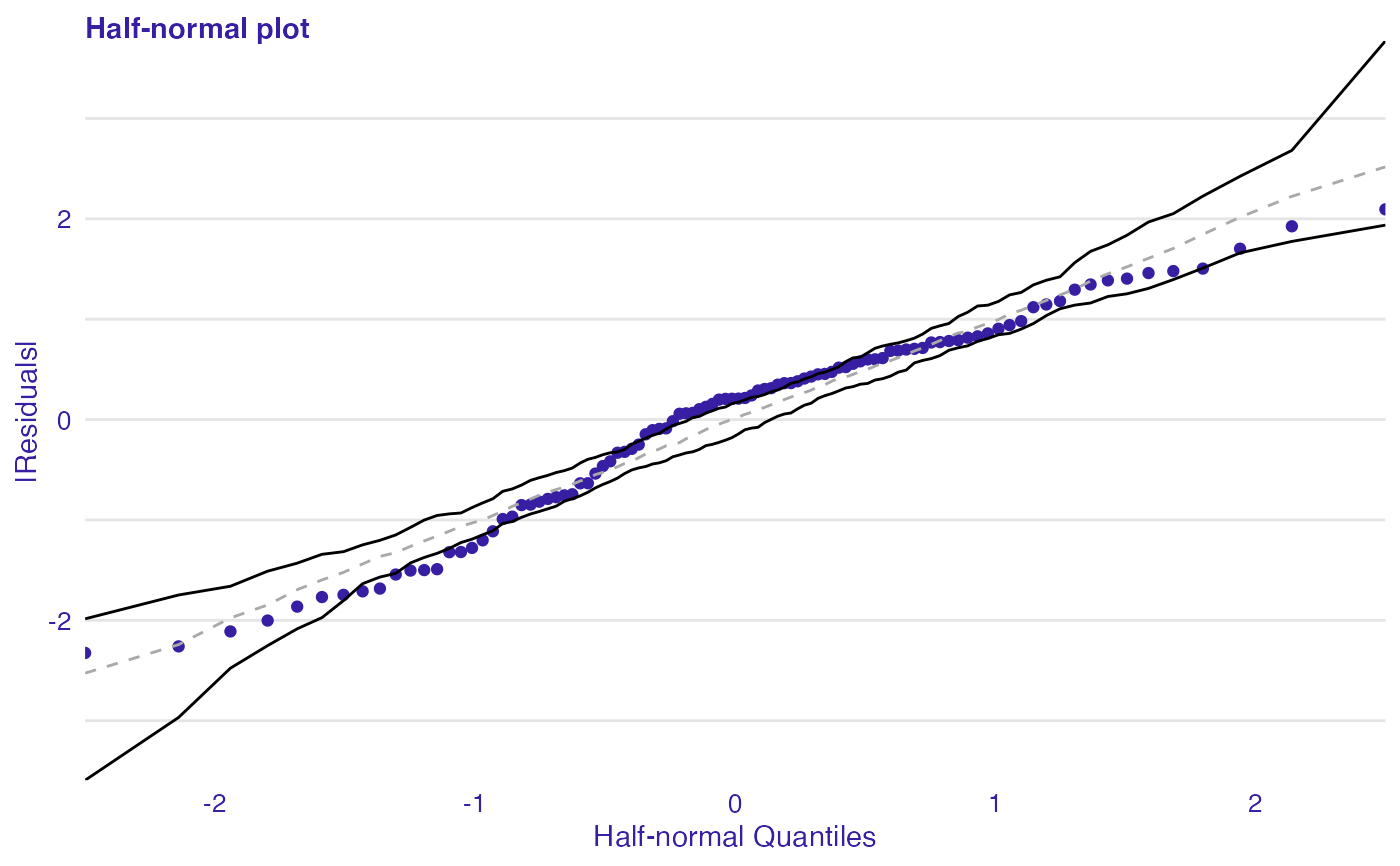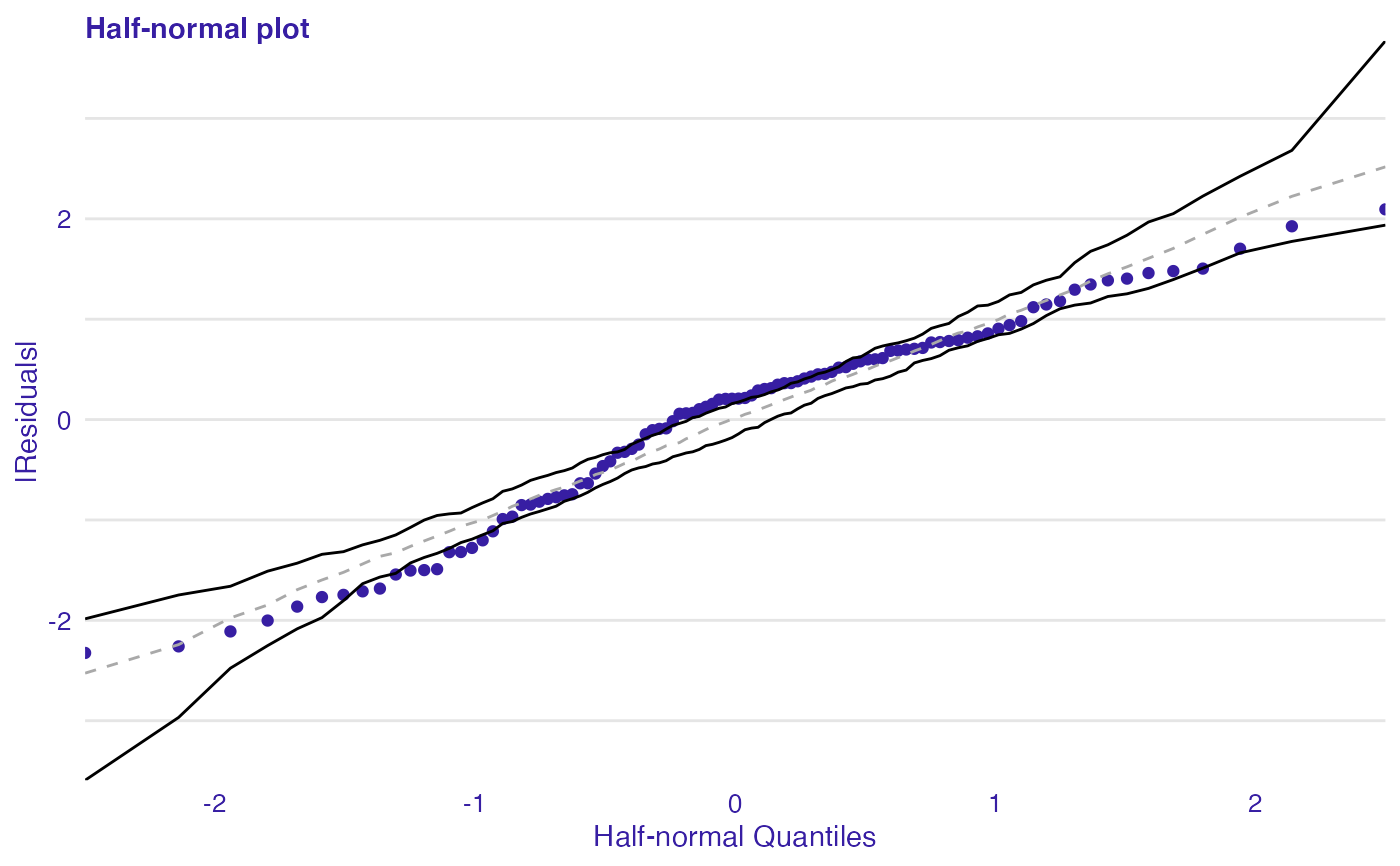The half-normal plot is one of the tools designed to evaluate the goodness of fit of a statistical models. It is a graphical method for comparing two probability distributions by plotting their quantiles against each other. Points on the plot correspond to ordered absolute values of model diagnostic (i.e. standardized residuals) plotted against theoretical order statistics from a half-normal distribution.
plot_halfnormal(object, ..., quantiles = FALSE, sim = 99) plotHalfNormal(object, ..., quantiles = FALSE, sim = 99)
Arguments
| object | An object of class |
|---|---|
| ... | Other |
| quantiles | If TRUE values on axis are on quantile scale. |
| sim | Number of residuals to simulate. |
Value
A ggplot object.
See also
Examples
dragons <- DALEX::dragons[1:100, ] # fit a model model_lm <- lm(life_length ~ ., data = dragons) lm_audit <- audit(model_lm, data = dragons, y = dragons$life_length)#> Preparation of a new explainer is initiated #> -> model label : lm ( default ) #> -> data : 100 rows 8 cols #> -> target variable : 100 values #> -> predict function : yhat.lm will be used ( default ) #> -> predicted values : No value for predict function target column. ( default ) #> -> model_info : package stats , ver. 4.1.1 , task regression ( default ) #> -> predicted values : numerical, min = 585.8311 , mean = 1347.787 , max = 2942.307 #> -> residual function : difference between y and yhat ( default ) #> -> residuals : numerical, min = -88.41755 , mean = -1.489291e-13 , max = 77.92805 #> A new explainer has been created!#> Gaussian model (lm object)# plot results plot_halfnormal(hn_lm)

